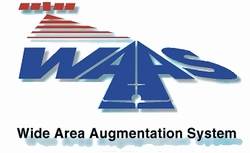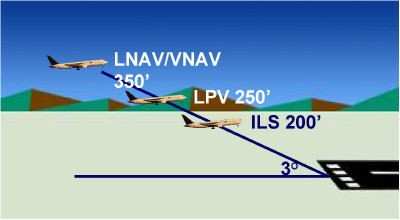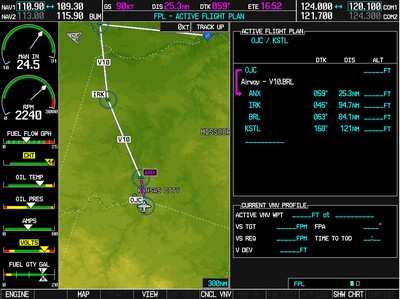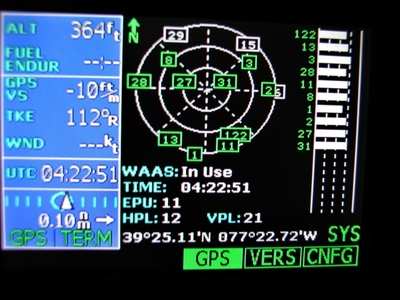AOPA Notes 'The Quiet Revolution Continues'
 The Federal Aviation
Administration (FAA) recently marked a major milestone in the move
toward a satellite-based air traffic control system with the
implementation of the 1,000th instrument approach that uses the
enhanced GPS Wide Area Augmentation System (WAAS). The Aircraft
Owners and Pilots Association has been a strong proponent of WAAS
as part of the move toward satellite navigation that the
Association has championed since 1990.
The Federal Aviation
Administration (FAA) recently marked a major milestone in the move
toward a satellite-based air traffic control system with the
implementation of the 1,000th instrument approach that uses the
enhanced GPS Wide Area Augmentation System (WAAS). The Aircraft
Owners and Pilots Association has been a strong proponent of WAAS
as part of the move toward satellite navigation that the
Association has championed since 1990.
"There is a lot of talk about NextGen, a satellite-based air
traffic control system that is envisioned for 20 years down the
road," said AOPA President Phil Boyer, "but WAAS is an example of
what I like to call 'NowGen' -- technologies to improve air traffic
that are either here today or will be ready to deploy in the next
three to five years."
Since WAAS was turned on three-and-a-half years ago, AOPA has
been pressing the FAA to transform aviation by implementing as many
of the satellite-based approaches as possible each year. The FAA
has diligently done so, implementing more than 300 each year.
WAAS is a satellite-based system that corrects minor errors in
Global Positioning System (GPS) signals, making them even more
accurate and allowing the FAA to develop instrument approach
procedures for airports without having to install and maintain
expensive radio transmitters. For instance, a WAAS approach can
cost as much as 20 times less to implement than a traditional
Instrument Landing System (ILS), and with the right airport
lighting system is as precise as an ILS from a general aviation
pilot’s perspective.

In addition, as the FAA transitions to a satellite-based
navigation system that includes WAAS, the agency will no longer
need to pay to maintain costly ground-based infrastructure.
AOPA has supported WAAS not only as a cost-saving measure, but
because it has the potential to make virtually every public-use
general aviation airport in the United States accessible as an
all-weather airport. As of February 14, 2008, the FAA had approved
1,028 WAAS approaches at 577 airports. More than half of those are
general aviation airports.
General aviation pilots and aircraft owners have embraced
satellite navigation and the advanced capabilities of WAAS from the
outset. Tens of thousands have already equipped to take advantage
of WAAS.

While the airlines had originally favored an alternative to
WAAS, at least one, Southwest, has announced plans to equip 200 of
its Boeing 737s with WAAS-capable GPS receivers.
"The Next Generation Air Traffic Control System (NextGen) is
vital to the future of aviation in America, but it won’t be
complete until 2025 or later," said Boyer. "WAAS is an excellent
example of things we are doing now and in the near future to
improve the National Airspace System."

Other satellite-based technologies already being used
extensively in general aviation aircraft provide pilots with
in-cockpit data such as graphical weather and airspace
information.
 ANN's Daily Aero-Linx (05.02.24)
ANN's Daily Aero-Linx (05.02.24) ANN's Daily Aero-Term (05.02.24): Touchdown Zone Lighting
ANN's Daily Aero-Term (05.02.24): Touchdown Zone Lighting Aero-News: Quote of the Day (05.02.24)
Aero-News: Quote of the Day (05.02.24) ANN FAQ: Contributing To Aero-TV
ANN FAQ: Contributing To Aero-TV NTSB Final Report: Cirrus Design Corp SR20
NTSB Final Report: Cirrus Design Corp SR20






